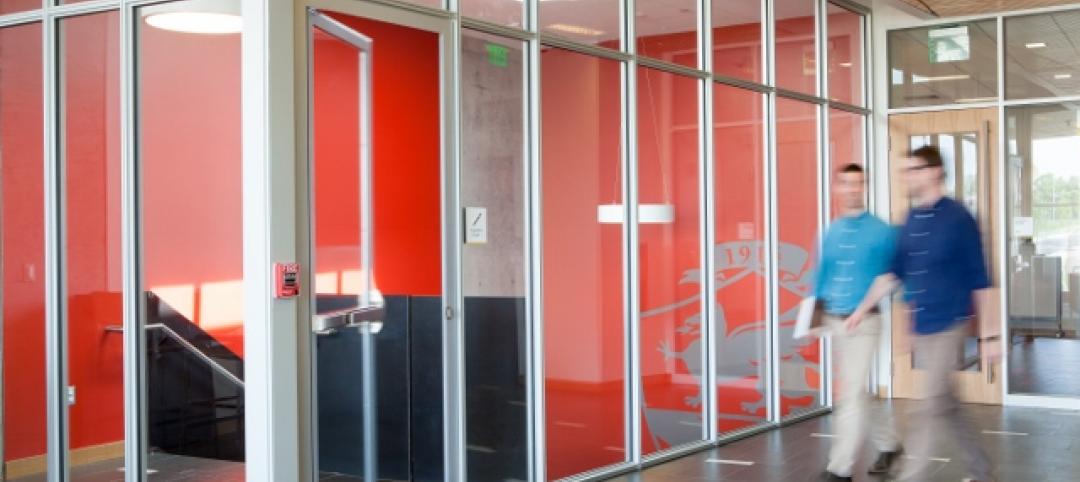Location: Pingree Grove, Ill.
Installation time: 148 days
Size: 19,000 sf
When DRH Cambridge Homes Inc. annexed a planned development with 3,000 homes into Pingree Grove, a small farm village northwest of Chicago, the principal school district needed assistance to meet the growing student population. Cambridge Homes engaged Presidential Services to research a solution that would bring a shorter school creation cycle, reduce costs, and provide space flexibility that would serve a life-long learning commitment for the emerging new village.
The team determined that a combination of site-built and prefabricated components would meet all three criteria, and the research and partnership led to the creation of the Cambridge Lakes Learning Center (CLLC) – a multi-building campus joined by prefabricated corridors – on a 15-acre site within the new development.
The Process
The action plan included opening a K-8 public charter school and a private pre-school within three buildings in the fall of 2007. Whitley Manufacturing was selected to provide the modular portions of the building. After completion of the first phase, Whitley provided both the second and third phase of development – an addition to the third and fourth grade building, and new construction of a seventh and eighth-grade classroom building.
The accelerated delivery schedule of modular construction allowed the school to scale their facilities to match enrollment. In order to keep disruption to the campus to a minimum, the modular units were built in the factory during the spring, with the balance of work occurring over the summer.
Architectural Excellence & Sustainability
Central, steel-structured “kivas” with high ceilings and expansive clerestory windows were site-built, and the modular units were set around this, forming an interior layout designed for flexibility and a visually appealing exterior. To create a modern aesthetic, the steel of the roof system and white-painted galvanized spiral ductwork were exposed. Sustainable acoustical panels above the structural steel created a well-insulated roof system that also reduces sound transmission.
Each classroom was designed with five natural activity centers, offering flexibility for teachers. Daylighting and passive lighting were used to improve efficiency and support active learning in the classroom.
Cost Effectiveness
The building was designed to deliver value through reduction in upfront costs and long-term savings through reduced operating costs delivered by energy-efficient features and systems. The exterior of the building was clad with a uniquely manufactured fiber cement panel product in cut stone, brick, and wide-lap siding finishes that deliver superior performance and durability at a reduced cost. Insulation was increased throughout the building, including the use of structural acoustical panels with integrated rigid insulation above.
Energy efficient, three-phase packaged HVAC units are roof-mounted and screened behind parapets, preserving the exterior aesthetic. Commercial-grade windows and doors with dual pane, Low-E glazing were used throughout the entire structure. Extensive value engineering and close coordination of the project team developed an optimal scope of work that delivered maximum value to the client.
For more information on the project, visit www.whitleyman.com.
 About MBI
About MBI
The Modular Building Institute (MBI) is the international nonprofit trade association serving the modular construction industry. Members are suppliers, manufacturers, and contractors engaged in all aspects of modular projects, from complex multistory solutions to temporary accommodations. As the voice of commercial modular construction, it is MBI's mission to expand the use of off-site construction through innovative construction practices, outreach, and education to the construction community and customers, and recognition of high-quality modular designs and facilities. For more information on modular construction, visit www.modular.org.
Related Stories
K-12 Schools | Feb 26, 2015
Should your next school project include a safe room?
Many school districts continue to resist mandating the inclusion of safe rooms or storm shelters in new and existing buildings. But that may be changing.
K-12 Schools | Feb 26, 2015
Construction funding still scarce for many school districts
Many districts are struggling to have new construction and renovation keep pace with student population growth.
K-12 Schools | Feb 26, 2015
D.C.'s Dunbar High School is world's highest-scoring LEED school, earns 91% of base credits
The 280,000-sf school achieved 91 points, out of 100 base points possible for LEED, making it the highest-scoring school in the world certified under USGBC’s LEED for Schools-New Construction system.
K-12 Schools | Feb 25, 2015
Polish architect designs modular ‘kids city’ kindergarten using shipping container frames
Forget the retrofit of a shipping container into a building for one moment. Designboom showcases the plans of Polish architect Adam Wiercinski to use just the recycled frames of containers to construct a “kids city.”
University Buildings | Feb 23, 2015
Future-proofing educational institutions: 5 trends to consider
In response to rapidly changing conditions in K-12 and higher education, institutions and school districts should consider these five trends to ensure a productive, educated future.
Sponsored | Energy Efficiency | Jan 23, 2015
Rapid payback and reduced consumption with modulating buildings
| Jan 2, 2015
Construction put in place enjoyed healthy gains in 2014
Construction consultant FMI foresees—with some caveats—continuing growth in the office, lodging, and manufacturing sectors. But funding uncertainties raise red flags in education and healthcare.
Sponsored | | Dec 30, 2014
First-class glass: Designing for fire safety in schools
As more students enter the school system each year, designing for fire safety in educational facilities has never been more critical. Fire-rated glazing can be a key part of the solution.
| Dec 28, 2014
AIA course: Enhancing interior comfort while improving overall building efficacy
Providing more comfortable conditions to building occupants has become a top priority in today’s interior designs. This course is worth 1.0 AIA LU/HSW.
| Dec 2, 2014
Nonresidential construction spending rebounds in October
This month's increase in nonresidential construction spending is far more consistent with the anecdotal information floating around the industry, says ABC's Chief Economist Anirban Basu.
















